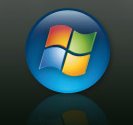The Apple-Intel Experience

If you've read the other posts around here, you may be thinking I'm kinda like John Hodgman from his new commercial for Apple where he claims to be a PC. (by the way, John is one of my favorite authors and contributors to the Daily Show, and you should check him out) I am in no way a "fan-boi" of either camp. Computers are to me as hammers and saws are to a carpenter, or like guns are to Robert DeNiro in Ronin. It's a toolbox, and I use what I need.
With my position over here at the newspaper, I find myself constantly needing both a Mac and a PC. When the intel-based Macs started shipping en-masse, I figured it would be the perfect tool to drop in my toolbox, and I asked very nicely if I could have one. One of the reasons I got one was to look at the performance of this machine compared to the G5 models that preceded it. While I wrote a massive 6 page evaluation for the company complete with graphs, charts, and tables, I figured I'd just drop a couple of the important things here in case anyone has thought "I'm gonna get a Mac" recently.
As anyone who is into either Apple Computer, Intel Corp, or the stock market in general knows, Apple is attempting to turn around a three-year slum by switching from IBM's PowerPC line of processors to intel's Core line. This change brings about a need to recompile all of our programs to what Apple is calling a "Universal Binary." You can find out just how many Universal Apps you have just by looking in the file properties.
Apple has bundled in a little program called Rosetta to make the transition easier. However, even though the emulation software is very good, it's still emulation, and still quite slow. With Adobe promising not to release any new Universal Binaries until Creative Suite 3 ships and Quark requiring the upgrade to version 7, most media companies are going to steer clear until they need to update their software.
Luckily, with Boot Camp, we can just buy and install a copy of Windows XP and use everything at light speed. This honestly is the most functional environment, in my humble opinion, as there is no Rosetta to slow you down. Everything just works like it should, which is nice. Granted, the webcam doesn't work, and the buttons feel a little weird on the keyboard, but other than that, everything's just peachy.
So should you buy a new Mac or not? Maybe... In a professional deployment I would have to say no. In a home environment? I can't say I wouldn't. Even Dell would have trouble beating the price on this thing for what you get. Remember, it's a keyboard, mouse, monitor, speakers and a computer that's going to end up faster than most towers out there in everyday usage. Not to mention, it is a very attractive package.












